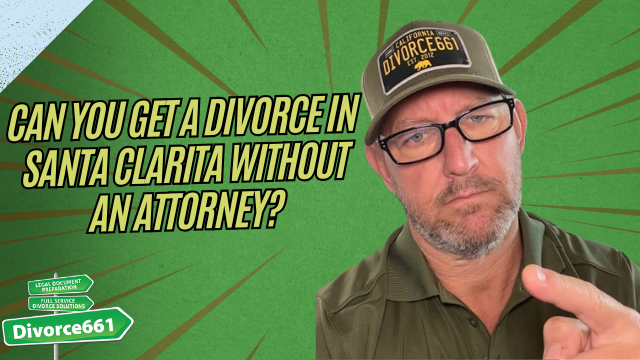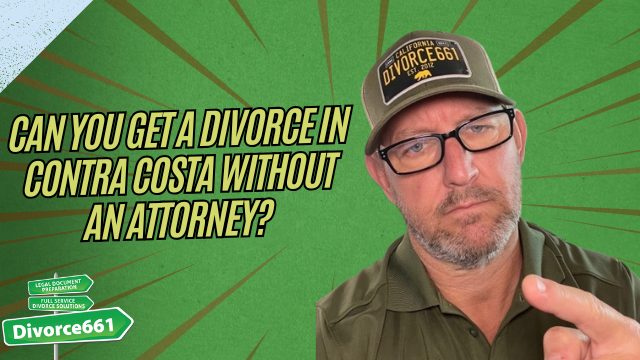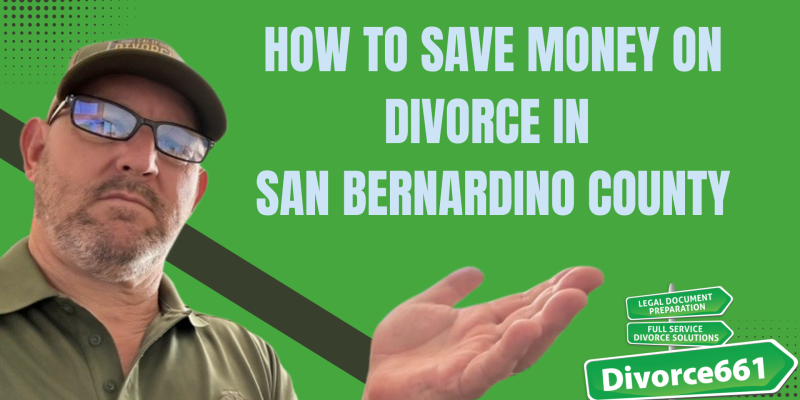Can You Get a Divorce in Santa Clarita Without an Attorney?
Can you get a divorce in Santa Clarita without an attorney? The short answer is yes. If your divorce is amicable and you and your spouse agree on the major issues, California law does not require either of you to hire a lawyer. You can complete the entire process on your own, or with the help of a flat fee, attorney free service that handles the paperwork and filings for you.
When you do not need an attorney
If you and your spouse agree on the key terms of your divorce, you can do this without ever stepping foot in a courtroom. Agreement means you have worked out:
- Property division and who keeps what
- Spousal support, if any
- Parenting time and custody arrangements, if you have children
- How debts will be handled
When these items are settled, the case is considered uncontested. An uncontested divorce can be completed entirely online, with documents filed and a judgment entered by the court, all without traditional attorney representation.
How the process works in California
California law allows people to represent themselves in family law matters. The basic steps for an uncontested divorce are:
- File the initial petition with the court
- Exchange financial disclosures and required paperwork
- Create and sign a written agreement covering property, support, and parenting
- Submit the final judgment or proposed order to the court
- Wait for the court to review and approve the judgment
With an organized approach and accurate paperwork, courts will normally approve an uncontested settlement. Many couples finalize everything remotely, which saves time and legal fees.
A real example
Recently I helped a Santa Clarita couple who assumed they needed attorneys just to get started. Once they realized they agreed on the terms, we handled the filing, completed the financial disclosures, and submitted their judgment. Everything was done online and was approved by the court in just a few weeks. No lawyers were involved, and the couple avoided thousands of dollars in legal fees.
No attorney required.
What we handle for amicable couples
For couples who want a clean, simple process, a flat fee, attorney free solution can include:
- Preparing and filing all required court forms
- Guidance to complete financial disclosures
- Drafting the marital settlement agreement and judgment
- Filing submissions with the court and tracking the case
- Remote support so you do not need to attend court
These services streamline the process, reduce stress, and cut out the hourly billing associated with traditional divorce lawyers.
When you should consider hiring an attorney
Not every divorce is a good candidate for an attorney free approach. You should consult an attorney if you have any of the following:
- Significant disputes over child custody or parenting time
- Complex financial situations, such as businesses, trusts, or large investment portfolios
- Contested issues about spousal support or pensions
- Concerns about domestic violence or coercion
- One spouse will not cooperate or refuses to sign agreements
In these situations, having legal representation helps protect your rights and can be crucial to reaching a fair outcome.
Benefits of a flat fee, attorney free divorce service
- Predictable pricing with no hourly billing
- 100 percent remote process for convenience
- Fast completion for uncontested cases
- Paperwork prepared to court standards
- Reduced stress and fewer court appearances
How to get started
If you and your spouse agree on the terms and want to avoid high legal fees, you can get started by preparing the basic information and moving forward with online filing. If you want help, schedule a free consultation to learn how a flat fee, attorney free solution can work for your situation. For more information visit divorce661.com and book a free consultation.
Final thought
An amicable divorce in Santa Clarita does not require an attorney. With agreement, proper paperwork, and the right support, you can finalize your divorce quickly, affordably, and with minimal stress.









